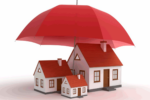How To Save On Homeowner’s Insurance

- Roof Shape
- Roof Bracing of Gable End Roof Deck Attachment
- Roof Covering
- Roof-to-Wall Connections
- Secondary Water Resistance
- Doors
- Protection of Openings (windows and other openings)

Serving South Florida


Filed under: 2022 Real Estate, Blog, Boca Raton real estate, Exclusive Buyer Agency, Exclusive Buyer Agent, First Time Homebuyers, Flood Insurance, Florida Real Estate, Home Buyer Advice, Home Buyers, Homebuyer Advice, Homeowners Insurance, Hurricane Preparedness, Real Estate, Real Estate Investment, real estate news, Real estate trends, South Florida Real Estate, Uncategorized by Kim Bregman
Comments Off on How To Save On Homeowner’s Insurance

Filed under: 2022 Real Estate, Blog, Boca Raton real estate, downtown boca raton, Exclusive Buyer Agency, Exclusive Buyer Agent, Florida Real Estate, Foreign Home Buyers, Home Buyer Advice, Home Buyers, Homebuyer Advice, Homeowners Insurance, International Home Buyers, International investors, Jupiter FL Gated Communities, Real Estate, Real Estate Investment, real estate news, Real estate trends, second home, short term rentals, South Florida Real Estate, vacation home by Kim Bregman
Comments Off on Short-Term Rentals As Investments

Filed under: Blog, Boca Raton real estate, cash out refinance, contracts, Down Sizing, Exclusive Buyer Agency, First Time Homebuyers, Florida Real Estate, Foreign Home Buyers, HELOC, home equity, Home Financing, Homebuyer Advice, House Closings, International Home Buyers, International investors, Mortgage Information, peer to peer lending, private money lender, Real Estate, Real Estate Closings, Real Estate Investment, real estate news, Real estate trends, Refinancing, Retirement, Reverse Mortgage, second home, Self Directed IRA, Seller Financing, South Florida Real Estate, vacation home by Kim Bregman
Comments Off on Using Home Equity To Buy Another Property

Nationally, expect slower housing price appreciation, easing inflation and rising interest rates in 2022, according to a survey of more than 20 top U.S. economic and housing experts by the National Association of Realtors® (NAR). “Overall, survey participants believe we’ll see the housing market and broader economy normalize next year,” Yun said. “Though forecasted to rise 4%, inflation will decelerate after hefty gains in 2021, while home price increases are also expected to ease with an annual appreciation of less than 6%. Slowing price growth will partly be the consequence of interest rate hikes by the Federal Reserve.”
Fed boosts to interest rates do tend to move rates higher on longer-term loans, such as 30-year mortgages. Yun expects the 30-year fixed mortgage rate to increase to 3.5% as the Fed raises interest rates to control inflation but noted this is lower than the pre-pandemic rate of 4%.
In South Florida Home prices are projected to continue to grow, but slower than the past year. “We don’t expect to see the same price appreciation we had last year, though we don’t expect to see a decline in pricing,” said Eli Beracha, director of the Hollo School of Real Estate at Florida International University. A Realtor.com forecast predicts that South Florida housing prices may rise almost 6% over the next year, while a Zillow forecast predicts that home price appreciation could shoot up by 15%.
A few factors are going to cause slower price growth: more inventory as sellers try to capitalize on the hot market, new developments hitting the market and an increase in mortgage interest rates. Demand from foreign and out-of-state buyers will continue to drive South Florida’s housing market, but experts also expect new inventory to alleviate some of the pressure that has been fueling the pandemic-era housing boom.
Experts say the market will still favor sellers, as demand and limited inventory will keep the balance in their favor. Bidding wars and multiple offers on homes will probably still be a common.
The supply chain issues, and lack of labor will continue to lead to increased construction costs and thus higher prices for buyers.
Filed under: 2022 Real Estate, Blog, Boca Raton real estate, Exclusive Buyer Agency, Exclusive Buyer Agent, First Time Homebuyers, Florida Real Estate, Home Buyer Advice, Home Buyers, Homebuyer Advice, House Closings, Real Estate, Real Estate Closings, Real Estate Investment, real estate news, Real estate trends, South Florida Real Estate by Kim Bregman
Comments Off on 2022 South Florida Real Estate Projections

Filed under: Blog, Boca Raton real estate, Down Sizing, Exclusive Buyer Agency, Exclusive Buyer Agent, First Time Homebuyers, Florida Real Estate, Home Buyer Advice, Home Buyers, Home decorating, Homebuyer Advice, Interior Design, Real Estate, Real Estate Investment, real estate news, Real estate trends, South Florida Real Estate by Kim Bregman
Comments Off on Home Design Trends for 2022

Filed under: Blog, Boca Raton real estate, contracts, Exclusive Buyer Agency, Exclusive Buyer Agent, First Time Homebuyers, Florida Real Estate, Foreign Home Buyers, Home Buyer Advice, Home Buyers, home Inspections, Homebuyer Advice, House Closings, International Home Buyers, International investors, Real Estate, Real Estate Closings, Real Estate Investment, real estate news, Real estate trends, Relocation, Retirement, South Florida Real Estate, Title Insurance by Kim Bregman
Comments Off on Caveat Emptor- Buyers Beware!

A bidding war is when at least two prospective buyers have made legitimate offers for a home that are similar and the Seller wants to select the best offer and terms for themselves. Bidding wars are common—in most of 2020, over half of home offers presented have faced competitive bids, according to Redfin’s study. Although historically low interest rates have sparked buying activity recently, some neighborhoods are always sought-after and attract multiple offers whenever a home comes up for sale. Exclusive Buyer Agents are experts in winning bidding wars and getting credits during the due diligence period.
Expect to be in a bidding war In a hot housing market, it’s often not enough to quickly make an offer on a house but to have the highest price and best terms.
Here are a dozen ways you can get an edge on the competition.
If you have the ability to offer an all-cash bid, you gain a distinct advantage because you eliminate the possibility of a mortgage falling through before closing. Buying with cash will make the process go quicker because you won’t need to go through the approval process with a lender, who would also request an appraisal. If you can’t cover the entire purchase price in cash, you could agree to a larger down payment on the house, which increases your approval odds and might make your bid more attractive.
Pre-approval is a step most buyers will take anyway, but it’s absolutely essential for anyone in a competitive bidding situation. Pre-qualification is not enough, as it doesn’t show that the lender conducted the same amount of due diligence—such as checking your earnings and doing a hard credit check—that a pre-approval would require.
When you’re preparing for a bidding war, think of it like an auction—you need to know how much house you can afford before you actually bid. Once you know the maximum amount you’re willing to bid, you can include an escalation clause in your purchase offer to ensure you can instantly counteract any other bid. An escalation clause lets you increase your bid to avoid being outbid by another buyer up to a specified amount.
Buyers typically provide 1% to 5% of the purchase price as earnest money—a form of a security deposit—in a purchase contract, which gives sellers the assurance that you will follow through with the purchase. If you bail out on the contract without citing a contingency, you will likely lose the earnest money. If you put down more than the typical earnest money amount, it will tell the seller that you’re determined to follow through to the closing.
Speed is key in a seller’s market as competitive as this one. If you’re interested in a home but live far away or just haven’t been able to tour it, you can still throw your hat in the ring. Video tours and 3D walk-throughs have made sight-unseen offers much more feasible. Almost two-thirds (63%) of people who bought a home last year made an offer on a property that they hadn’t seen in person.
When you make an offer to purchase a house, you know the deal could fall through for numerous reasons, and you don’t want to lose your earnest money because of it. That’s why you include contingencies in the purchase contract; if the home inspection uncovers major problems or you can’t sell your current home in time to close on the new one, you can get out of the contract without penalty. Almost no offers contingent on the sale of a home will win a bidding war. Sell your home, rent and then start trying to get a home under contract. Simultaneous closings are so 1990’s.
If you can’t waive contingencies, sweeten them for the seller. Opt to expedite the contingency timeline.
First-time home buyers and those who have already sold their previous home might be in a position to be flexible with the sellers on their move-in date. A seller might ask for more time if they have concerns about potential delays for a new home build. In this case, they could go through the closing and then rent the home back from you for a few weeks or a month. This flexibility could be as valuable—if not more valuable—than a higher bid on the house.
A lot of successful buyers today win by making an offer that exceeds the asking price…in fact it is expected. This also means that a lot of buyers end up exceeding their budgets. To prevent this, only search for homes that are listed 10-15% below what you can afford, so that you can make an over list price offer.
Home buyers can make their offers more competitive by offering to pay for expenses that are typically covered at least partially by the seller.
Home sellers, especially ones who have lived in a home for a long period of time, can sometimes be swayed by a personal note that explains why you believe this is the home of your dreams. For example, you might know that the current owner raised a family in the home, and you can discuss how you hope to do the same. It might seem a bit over the top, but it’s certainly worth a try when not much separates your offer from others. And yes—sometimes it works. Avoid putting any personal information in the letter that may expose the Seller of real estate agents from violating Fair Housing laws.
With more than half of offers facing competition these days, it’s more likely than not that you’ll get into a bidding war if you’re in the market for a home. It’s also wise to know when to walk away. It’s OK to put your search on hold if you reach the point where you’re not comfortable making the aggressive offers that are often necessary to win in today’s market. You don’t want to end up with buyer’s remorse, after all.
Filed under: Blog, Boca Raton real estate, contracts, Exclusive Buyer Agency, Exclusive Buyer Agent, First Time Homebuyers, Florida Real Estate, Foreign Home Buyers, Home Buyer Advice, Home Buyers, Home Financing, home Inspections, Homebuyer Advice, House Closings, International Home Buyers, International investors, Real Estate, Real Estate Investment, real estate news, Real estate trends, Relocation, South Florida Real Estate by Kim Bregman
Comments Off on How To Win A Bidding War!

|
|
|
|
|
|
|
|
|
Filed under: Blog, Exclusive Buyer Agency, Exclusive Buyer Agent, First Time Homebuyers, Flood Insurance, Florida Real Estate, Home Buyer Advice, Home Buyers, Home Maintenance, home safety, Homebuyer Advice, Homeowners Insurance, Hurricane Preparedness, International Home Buyers, Real Estate, Real Estate Investment, real estate news, Real estate trends, South Florida Real Estate, Uncategorized by Kim Bregman
Comments Off on 2021 Hurricane Preparedness Guide


An escalation clause is language inserted into a purchase offer for a home that’s intended to make sure a buyer is the highest bidder. It’s typically used when a buyer and their real estate agent strongly believe a house will receive multiple offers.
An escalation clause states that the buyer will pay a certain amount of money above the highest offer the seller receives. It generally includes a ceiling cap to make sure the buyer doesn’t agree to pay more money than they can afford.
An escalation clause can be a powerful technique when used correctly, but unfortunately it is seldom used as effectively as it could be. Such a clause increases, or escalates, a contract above its originally offered Sales or Contract Price when the Home Seller has received another Contract. The intent of the Clause is to crush competing contracts by automatically and incrementally increasing the buyer’s offer price by a pre-determined amount above other offer(s).
Typically, there are three distinct parts to any escalation clause that’s included in a real estate contract.
Proof of a bona fide offer: You can rest easy knowing that sellers can’t just use an escalation clause as an excuse to make you pay a higher sale price. When the contract asks for “proof of a bona fide offer,” it means that the listing agent must be able to prove that another offer came in with a purchase price higher than your original suggestion. Typically, the listing agent will send over a copy of the page from the other buyer’s purchase agreement that shows the higher price. However, any identifying information for the other buyer will be redacted.
An escalation amount: The escalation clause should also include an amount by which you’d like to outbid any higher offers.
A price cap: The price cap represents the maximum amount you’re willing to pay for the property, or how high you’re willing to allow your offer to go. If an offer is submitted that is higher than this amount, be aware that your offer may be taken out of the running.
Pros of Using an Escalation Clause
Cons of Using an Escalation Clause
Don’t make the mistake of thinking the Highest Contract Price will always win; other TERMS of a contract can often prove more valuable to the Sellers.
Having a knowledgeable Exclusive Buyers Agent is invaluable for situations like this and for understanding the risks and possible benefits of opening negotiations in this manner. The seller has the right not to respond to any offer, whether or not it contains an escalation clause.
Filed under: Blog, Boca Raton real estate, contracts, Exclusive Buyer Agency, Exclusive Buyer Agent, First Time Homebuyers, Florida Real Estate, Home Buyer Advice, Home Buyers, Homebuyer Advice, House Closings, International Home Buyers, International investors, Real Estate, Real Estate Closings, Real Estate Investment, real estate news, Real estate trends, South Florida Real Estate by Kim Bregman
Comments Off on Pros and Cons of Escalation Clauses


Buying a home in a Seller’s market always has its challenges. But when you’re trying to do it in a seller’s market, the difficulty can reach a new level. When the market favors the seller, time is of the essence. Multiple offers happen with more regularity in a seller’s market than a buyer’s market, because a seller’s market is defined in part by low inventory and a surplus of home buyers. A beautiful home that is priced well can attract more than one offer.
In a seller’s market, you should always assume you’re competing against several other offers. However, that doesn’t mean you can’t buy a new home in a seller’s market, when there are more buyers than homes, and sellers can afford to hold out for higher offers. You just need to make sure you do it right and arm yourself with the right information:
Here are a few things to consider as you prepare your offer when buying in a seller’s market:
Choose an Experienced REALTOR: In sports and in business, it’s important to have the best players on your team when facing fierce competition. In a seller’s market, that means choosing a real estate agent who not only has proven expertise in the neighborhoods you’re interested in but is also highly responsive and efficient. Make sure to use an Exclusive Buyer’s Agent that owes you a fiduciary and works in your best interest.
Demonstrate Credit Worthiness: You should get Pre-Approved for a home mortgage with a local lender before touring homes if you need to get financing. By obtaining a pre-approval for a mortgage before you start home shopping, you’ll know how much buying power you have. Your offer may have far more credibility than competing ones where buyers didn’t take this step.
Lower Your Expectations: When the inventory of homes is limited, you probably can’t afford to wait for the perfect house to hit the market. Prepare yourself to adjust your expectations. It makes the most sense to make exceptions to your criteria for things that can be changed. For example, you can renovate or add a bathroom someday, but you can’t change the home’s location or lot size.
Make your Best Offer first, be Ready to Bid: Make your best offer but be prepared for it not to be your final offer. High home prices can lead to home appraisals that don’t climb as fast, leaving lenders to not fund the loan. Home buyers should have money set aside the pay the difference between a contracted purchase price and the appraisal.
By Prepared to Make Concessions: Your relative lack of power in a seller’s market doesn’t just affect the question of price. It carries over to every other aspect of the deal, too. Shorten the inspection period, be flexible on closing dates; you should be prepared to accommodate the seller’s needs even if it is an inconvenience to you.
Don’t be that buyer who wants to wait until the weekend to view a home in a seller’s market. By the weekend, that home could be sold. Try to be one of the first showings. Sellers usually don’t enjoy having buyers come through their homes at all hours of the day, so most would like to see their home sold quickly. If you write a good, fast, and clean offer, your chances of acceptance are far better than those of a buyer who is unprepared or is unrealistic on price.
Finally, don’t get carried away with the pressure to buy, even in a seller’s market. Remember that a home decision has a long-term impact on your financial future. It may be better to let a house go than make a poor decision that’s expensive to change.
Filed under: Blog, Boca Raton real estate, contracts, downtown boca raton, Exclusive Buyer Agency, Exclusive Buyer Agent, First Time Homebuyers, Florida Real Estate, Home Buyer Advice, Home Buyers, Home Financing, Homebuyer Advice, House Closings, Real Estate, Real Estate Closings, Real Estate Investment, real estate news, Real estate trends, Relocation, South Florida Real Estate by Kim Bregman
Comments Off on Tips for Buying a Home in a Seller’s Market


All information is provided by the licensed REALTOR®/Broker/Agent. This information is not verified for authenticity or accuracy and is not guaranteed. This website is not responsible or liable in any manner for any content posted herein or in connection with our services. Information is not guaranteed and must be confirmed by the end user.
Copyright © 2024 OPTIMA PROPERTIES. All Rights Reserved. Privacy Policy | Intellectual Property Rights | Sitemap | Real Estate Website Design & Internet Marketing by Agent Image